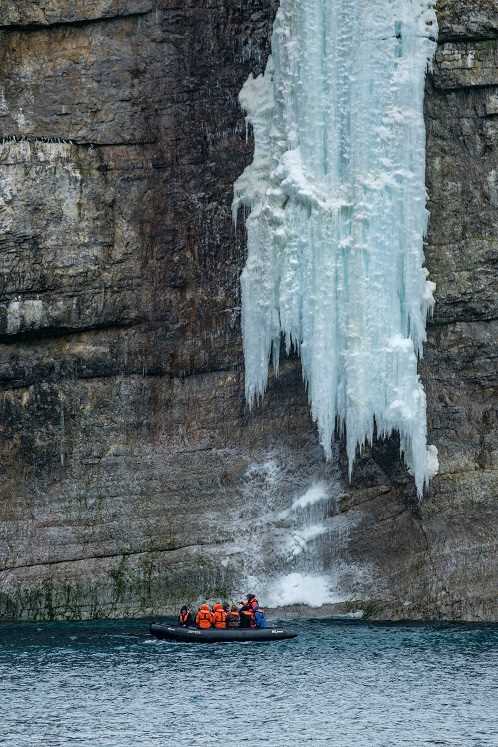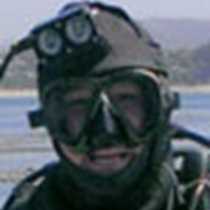Today, we officially entered the archipelago of Svalbard, as it is considered to be all of the islands between 10 - 35 ̊ E and 74 - 82 ̊ N! Happily making our way north, escorted by a flock of gliding Northern fulmars, a briefing about bears, boats, and boots kicked off the morning. Captain Martin Graser fascinated us with stories about sea ice and navigating these beautiful waters, clad with big, icy bergs that we can’t wait to explore.
After a delightful lunch, the Zodiacs were lowered, the warm parkas were layered, and snow began to fall as we prepared to behold the craggy cliffs of Bear Island. The nesting seabirds were out in full force, creating a sweeping, peppered spectacle in the sky above, in rafts on the water, and lining every cliff edge as far as the eye could see. Sea stacks towered around the island in intricate layers that seemed to resemble little Lego blocks with geometric angles adorning each edge. Kittiwakes, fulmars, guillemots, great skuas, and an occasional puffin were sighted fluttering, diving, bobbing about, and squawking up a ruckus amidst the turbid waters. Close to the cliffs, massive icicles clung to the steep rocks and freshwater melt created clear, turquoise waters below. Remnants of an old Russian fishing vessel, wrecked along the beach, made for interesting photos in addition to seeing some wildlife carnage in action! Two skuas were picking apart a gull in the water, right in front of the rusted Russian wreckage. As our Zodiacs hugged the island’s coastline, no longer home to any actual bears, we were all in awe of the geological and avian nature that makes this such a special stop. The bumpy ride back to the ship made us extra appreciative for the warmth and shelter of National Geographic Orion as we were welcomed back with afternoon tea. After a very eventful afternoon, we all sat back and cherished the crunching of ice beneath the hull as seals and bergy bits began to fill the bright horizon of the midnight sun’s seascape.









